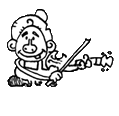Fortnite Dances – Step It Up
Here is a lesson on how to play the melody for a Fortnite dance called “Step it up” on violin and fiddle. This is actually a popular Irish jig called “Swallowtail Jig”. Amazing that this old tune is now in the most popular video game on Earth. Learn more about how music is recycled in this article: Dueling Banjos and the Great Folk Process.
My student and friend Toby will be showing you how to play the melody on violin. He’s new to teaching, so please give him lots of love! If you make it to the end you’ll see us bumble our way through the dance.
Take it from the experts (not), the key to Irish dancing is to kick and jump like crazy but have your upper body and arms remain perfectly motionless. Give it a try!
Some of you might be wondering, “What is Fortnite?” It’s a super-popular video game in which you fight zombies and save the world. Who doesn’t want to save the world? And who’s not worried about zombies taking over! A fun feature of the game is that players can do different dances within the game whenever they feel like it.
Toby is an avid fan of the game and fiddling. So it just made sense that we combine these two awesome things that he loves and make a fiddle video.
First quarter: A1-2-3-E0-1-0-1-0-A3-1

Second quarter: A1-2-3-E0-1-0-A3-1-3

Third quarter: A1-2-3-E0-1-0-1-0-A3-1
Fourth quarter: A3-2-3-0-D3-2-3-1-1-1

Full-length play-along track
If you want to unlock full play-along track, full tabs, and sheet music, then sign up for a free trial membership. It takes less than a minute and will change your life for the better!
Return to Lessons taught by student teachers >>
Leave a Reply
You must be logged in to post a comment.

Great job guys !!!’n